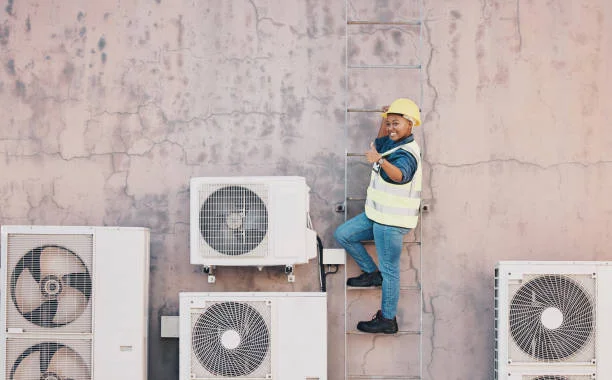When your air conditioning system suddenly stops working on a hot day, it can feel like an emergency—and in many cases, it is. Whether it’s due to electrical issues, refrigerant leaks, or complete system failure, knowing what to do when your AC breaks down can help you stay calm and take the right steps toward a quick solution. Being prepared and informed significantly affects how you handle these situations. We will explore the essential points every homeowner or renter should understand when facing an air conditioning emergency and what actions can lead to faster and more efficient service. This knowledge can help reduce stress, prevent further damage, and ensure your living environment becomes comfortable again as soon as possible.
Key Actions to Take When Your Air Conditioner Fails Unexpectedly
Recognize the Signs of a Serious Breakdown
An air conditioner doesn’t typically shut down without warning. Paying attention to the early warning signs can make a big difference. These signs might include inconsistent cooling, strange noises such as grinding or squealing, or odd smells like burning plastic or mold. Sometimes, the unit may run continuously without adequately cooling the space or cycle on and off more frequently than usual. If you experience any of these symptoms, your AC might be heading toward failure. In such cases, reaching out for air conditioning service in San Diego can ensure the problem is diagnosed and handled before it escalates into a full system breakdown.
Electrical issues can sometimes trigger tripped circuit breakers, flickering lights, or complete shutdowns. In some cases, the thermostat might also malfunction, giving inaccurate readings or failing to trigger the AC. These red flags often indicate internal problems like compressor failure, refrigerant leaks, or electrical faults that demand immediate attention. Recognizing these early can help you describe the problem accurately when calling for emergency service, speeding up the technician’s ability to identify and resolve the issue.
Don’t stop here—take a look at what else we’ve got for you!
Shut Down the System and Inspect for Obvious Issues
Once you notice a malfunction, the first step should be to turn off the system at the thermostat and, if needed, the main circuit breaker. This prevents further damage and reduces the risk of electrical hazards. After shutting it down, look around the unit and the thermostat. Is the filter clogged? Are there any leaks around the indoor or outdoor unit? Have the vents been obstructed by furniture or debris? A visual inspection won’t fix the issue, but it may help you spot minor problems or gather useful information for the technician.
For instance, a clogged filter could restrict airflow and cause the system to overheat, while ice buildup on the evaporator coils might signal a refrigerant or airflow issue. Be cautious during this step—never attempt to open the system or fix internal components yourself. Observing and documenting anything unusual can provide vital details that help your emergency AC technician diagnose and resolve the problem more efficiently.
Call for Emergency Service and Communicate Clearly
Contact a reliable emergency service provider once you’ve identified that your air conditioning system has failed. When making the call, be as specific as possible about what happened. Describe any unusual sounds, smells, or performance issues. Let the technician know if you’ve tried any steps, such as resetting the breaker or replacing the air filter. Clear communication helps them determine whether immediate action is needed and may even enable them to offer advice while en route.
Some companies, like https://www.warmzilla.co.uk/ offer 24/7 emergency services, while others might only be available during certain hours. Ask about response times, service call fees, and what to expect once the technician arrives. Prepare your space by clearing the area around the indoor and outdoor units to allow easy access. Ensuring you’re reachable by phone if the technician needs directions or updates is also helpful. These steps reduce delays and make the entire repair process smoother.
Understand What to Expect During Emergency Repair Visits
When the technician arrives, they’ll conduct a diagnostic assessment to pinpoint the issue. This usually involves checking the thermostat, evaluating electrical components, inspecting refrigerant levels, and assessing overall system performance. Once they determine the cause of the breakdown, they’ll explain the problem, offer repair options, and provide an estimated cost. In emergencies, many technicians carry common replacement parts to address standard failures on the spot, such as capacitors, fuses, or contactors.
However, more complex issues like compressor replacement or coil repairs may require ordering parts, which could extend the repair timeline. In those cases, the technician may offer temporary cooling solutions, such as portable AC units or system workarounds. It’s also essential to ask questions during this visit: What caused the failure? Is the system at risk of failing again soon? Would regular maintenance have prevented it? Understanding the answers can help you avoid similar issues in the future and make informed decisions about repair or replacement.
Understanding what to do when your air conditioner breaks down unexpectedly can make a stressful situation much more manageable. By learning to recognize warning signs, safely shutting down your system, clearly communicating with technicians, and preparing for emergency repair visits, you position yourself for a quicker resolution. Most importantly, investing in regular maintenance and being proactive about system care can greatly reduce the risk of future breakdowns. Whether it’s your home or workplace, knowing how to handle an air conditioning emergency gives you peace of mind and helps maintain comfort during the hottest days.
Want more insights like this? Head over to 2A Magazine and start exploring.







